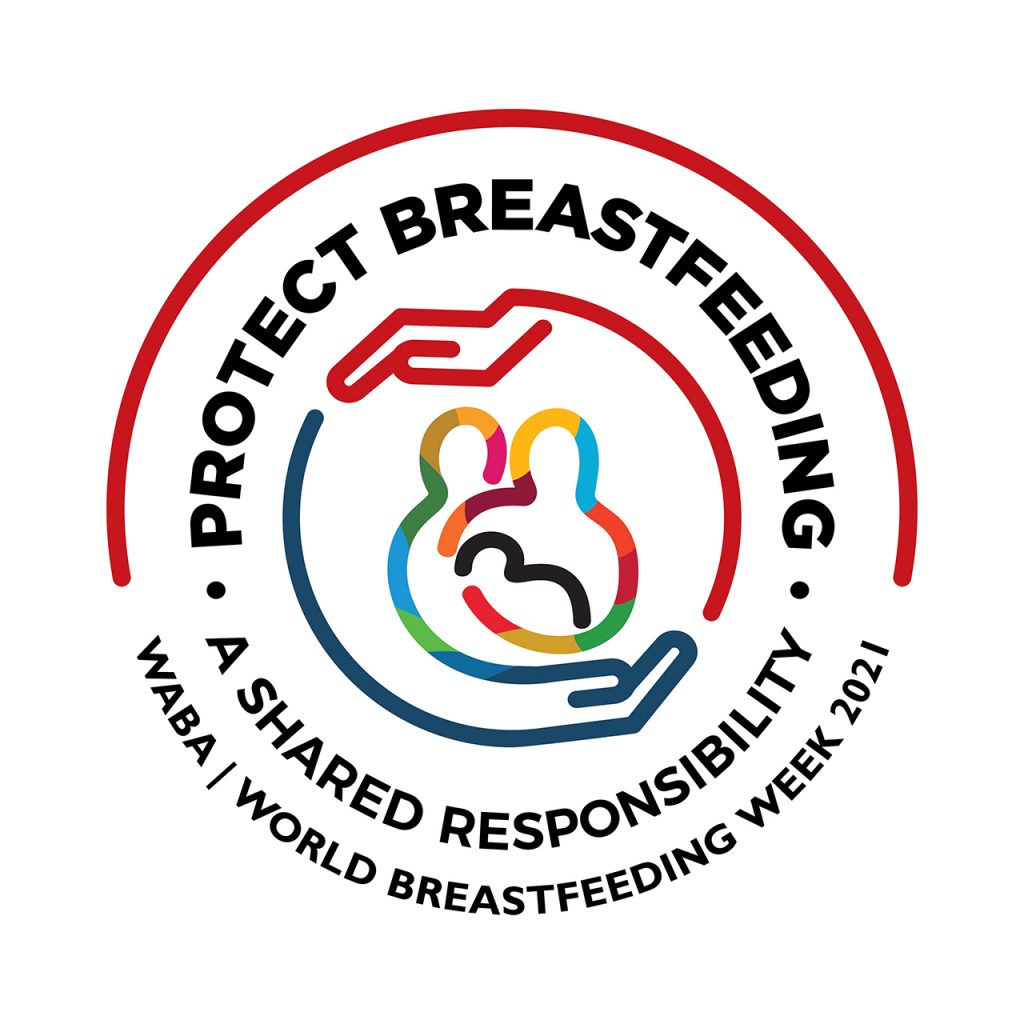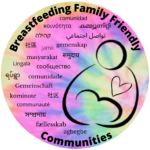
Summer is quickly going by, and August, the month that celebrates both World Breastfeeding Week and National Breastfeeding Month, is here!
Why do we need a World Breastfeeding Week or a National Breastfeeding Month?
You may be wondering why we have a World Breastfeeding Week or a National Breastfeeding Month. For many, it looks like breastfeeding is everywhere. There are images of nursing infants on social media; health departments provide information and resources for families; your community might even have a Breastfeeding Welcome Here proclamation.
Yes, there has been progress, and these August outreach and advocacy campaigns provide an opportunity to celebrate families and their breast/chestfeeding journeys. It also is a time to take a closer look at the state of infant feeding throughout the world. The World Health Organization reports that “over 820 000 children’s lives could be saved every year among children under 5 years, if all children 0–23 months were optimally breastfed.” Optimal breastfeeding is defined as exclusive breast/chestfeeding for the first six months of life with the introduction of nutritionally-adequate and safe complementary foods at six months and continued breast/chestfeeding for two years and beyond.
Yet, all children 0-23 months are not optimally breastfed. Rather, we write in terms of “only.” It is estimated that only 42% of newborns are able to nurse within the first hour after birth, a critical time to protect the newborn from infections and to reduce newborn mortality through the immunological effects of the first milk – colostrum. Globally, only about 44% of infants are exclusively breastfed for six months and only 45% continue to breastfeed up to two years. In the U.S., only 25.6% of infants are exclusively breastfeeding for six months and only a little under 40% are breastfeeding at one year. These numbers show that we are a long way from saving 820,000 children’s lives yearly.
World Breastfeeding Week and National Breastfeeding Month draw our focus to the inequities in optimal infant feeding and the challenges that families experience. They offer an important time for communities – governments, healthcare providers, educators, businesses, social organizations – to learn more and to (re)examine policies and practices to ensure that we are promoting, protecting, and supporting breast/chestfeeding.
The first week of National Breastfeeding Month is World Breastfeeding Week (WBW). This global campaign has been coordinated and hosted by the World Alliance for Breastfeeding Action (WABA) since 1992. The WBW 2021 theme, Protect Breastfeeding: A Shared Responsibility, continues the focus on the Sustainable Development Goals (SDGs). Organizations in countries around the world pledge to participate in #WBW2021 with activities – both virtual and in-person – to remind us of the importance of breast/chestfeeding for infants and their families. It also is central to the vision of Breastfeeding Family Friendly Communities. From governments and healthcare providers to businesses and educational systems and more, we all share the responsibility to ensure a welcome for breast/chestfeeding families in every aspect of community life so that families are supported to meet their infant feeding goals.
National Breastfeeding Month continues the advocacy and outreach campaign in the U.S. for the entire month. The U.S. Breastfeeding Committee has been hosting National Breastfeeding Month each year since it was declared in 2011. This year’s theme, Every Step of the Way, is especially exciting for Breastfeeding Family Friendly Communities (BFFC), because it speaks to the vision and mission of BFFC to bring together the entire community – all the places where families connect to work and shop and eat and play – to support families to meet their infant feeding goals. During Weeks Two, Three, and Four, the focus is on the inequities in breast/chestfeeding resources, education, and support for black and brown families.

- Week 1: World Breastfeeding Week
- Theme: Protect Breastfeeding: A Shared Responsibility
- Week 2: Indigenous Milk Medicine Week (“Evolution of Native Breastfeeding Week”)
- Theme: Nourishing Our Futures
- Week 3: Asian American Native Hawaiian and Pacific Islander Week
- Theme: Reclaiming Our Traditions
- Week 4: Black Breastfeeding Week
- Theme: The Big Pause: Collective Rest for Collective Power
Find out more about the US Breastfeeding Committee and National Breastfeeding Month.
World Breastfeeding Week and National Breastfeeding Month are important for the protection, promotion, and support of breast/chestfeeding. We take this moment – this week, this month – to celebrate breast/chestfeeding families throughout the world and to pledge to share the responsibility and be there every step of the way to ensure optimal growth and development for every infant.
How can we celebrate World Breastfeeding Week and National Breastfeeding Month?
- Spread the word via your website and social media sites.
- Check out the WBW toolkit for ideas.
- Learn about the many ways to “Take action with the USBC.”
- Reach out to your local government to proclaim or re-proclaim your community as a Breastfeeding Family Friendly Community.
- Amplify the work of your local breastfeeding advocates and coalitions.
- Provide opportunities to lift up the breast/chestfeeding journeys of families in your communities.
